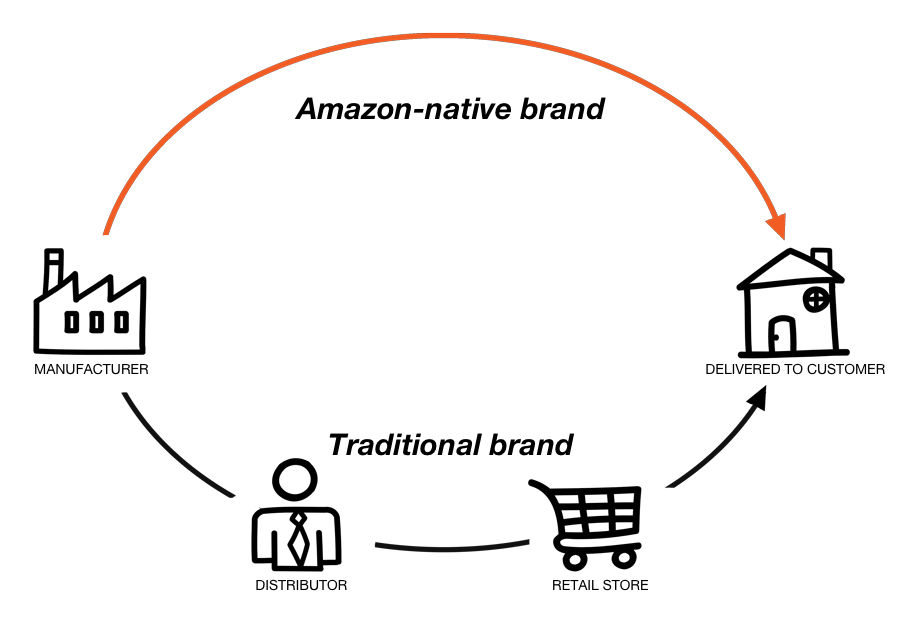In “The Hidden Player Spurring a Wave of Cheap Consumer Devices: Amazon” Farhad Manjoo of The New York Times described Wyze Labs, a one-year-old start-up in Seattle, who makes WyzeCam, a small, internet-connected video camera for just $20.
Manjoo explains that the camera is not selling for a tenth of the price of rivals by skimping on quality. It is mostly as complete feature-wise as its competitors. What makes it possible to achieve the $20 price tag is their approach to the product’s journey from manufacturing to retail.
There is none. Amazon is all of that at once.
As Manjoo puts it: “There’s a hidden hero in this story — or, if you’re a major brand, a shadowy villain. It’s Amazon.” The brand has cut out just about every middleman, including most retailers. In turn, it has cut out all the profit margin added by each layer of the retail supply chain.
WyzeCam is not the only brand who has done this. Many more exist on Amazon. The interesting aspect in this is not the low prices, although customers will be happy to see them, but the embracing of what Amazon allows as a platform.
What makes a brand has changed many times over the last 100 years, and these upstarts on Amazon are rethinking it still. Given that most shopping searches start on Amazon, the smart thing to do is to leverage that. We call them Amazon-native brands.

Over the last decade a sea of digital-native brands was born. With success stories like Dollar Shave Club, and Warby Parker in the headlines they have attracted billions in VC investments. What differentiated them from brands before was that selling online wasn’t just one of many channels.
Selling online was the core asset. It was part of the brand, part of the experience. In fact, the experience, customer service, and presence online was/is the brand.
Amazon-native brands are built to leverage the key strengths Amazon offers. First, Amazon is the store, since it has the attention of most customers already. For the same reason advertising budget is spent on Amazon ads. And thus in turn customer reviews are built up on Amazon. Inventory is of course handled by Amazon too through the Fulfillment by Amazon (FBA) service. As are returns. The list goes on.
But it’s not about the tools, and services. The key is not distracting the efforts on other platforms, websites, and retail stores. This avoids middlemen, and thus avoids extra cost. This is not to say that Amazon-native brands refuse to sell elsewhere. Just like digital-native brands often have offline stores, these brands eventually branch out.

For many brands selling online is one of the many channels. For digital-native brands selling online is the brand. And now, for Amazon-native brands selling on Amazon… is the brand.
This might sound like a small difference, as in it appears that all it takes is to only sell on Amazon. When done right though it changes how and what products are made, how they get promoted, and how customers discover them.
It is different thinking, and few of the traditional brands are probably fit to do this. This is what allows for products like WyzeCam to be born. Many electronics companies could copy the same product in a heartbeat, but they could never match its $20 price.
This model doesn’t work for all of the brands. This is not how all products are going to be made in the future. But behind the chaos of private labeling there is a world of innovation happening.
Jean-Jacques Guiony, CFO of LVMH, a $50 billion a year luxury goods company out of France, said “We believe the business of Amazon does not fit with LVMH, full stop, and it does not fit with our brands.” They are not alone, many brands sell on Amazon because they have to, not because they want to.
Which only shows the possibilities if Amazon made the experience better for brands. To close the feedback circle, Amazon-native brands still need a better way to listen to customers, and get data.
Amazon is the all-powerful gatekeeper in this. Only to remind the questions about monopolies, antitrust, and brake up. Many companies are simply unwilling to rely on Amazon for 100% of their revenue. But then there are those who do, and some are betting big.
“There is this erosion of what it means to be a traditional consumer product brand. Amazon is becoming something like the umbrella brand, the only brand that matters.”
– Scot Wingo, executive chairman of ChannelAdvisor
Manjoo finished his piece with this quote. If true, one should be building a brand which embraces this.

